Found a total of 10000 related content

Implementing Page Headers and Footers with HTML5 Tags
Article Introduction:Headers and footers are crucial in web page structure. 1. HTML5 uses and tags to define these areas to improve semantics and optimize SEO and accessibility; 2. It is often used on the top of a page or block, including title, navigation, logo, etc. It is recommended that a page only uses one global header and can be fixed through CSS; 3. Define the bottom of a page or block, usually containing copyright information, secondary navigation, etc., and should also keep the semantics clear and pay attention to auxiliary functions; 4. Fixed positioning and responsive design are recommended in the layout, and extracted into component reuse in combination with the front-end framework.
2025-07-10
comment 0
615

CSS 'position: sticky' - Introduction and Polyfills
Article Introduction:Key Points
The position: sticky property of CSS allows the navigation bar or other elements to remain visible when the user scrolls without having to pin it on the page. This property acts like a static position within its parent element until the given offset threshold is reached, at which point it is like the value is set to fixed.
Traditionally, the method to achieve this effect involves JavaScript, where scrolling events of a page are listened to and using JavaScript to change the values ??of the position and top attributes based on the current position of the viewport. However, when the position of the element is changed to fixed , this method can cause problems, causing it to leave the page stream and the element below "upward
2025-02-21
comment 0
984
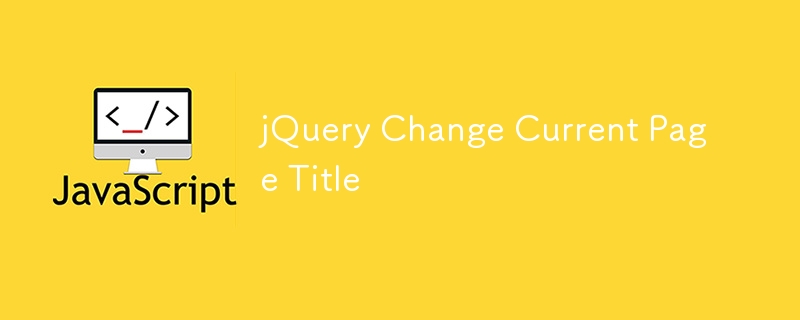
jQuery Change Current Page Title
Article Introduction:Although jQuery itself cannot directly modify web page titles, the same effect can be easily achieved using pure JavaScript. The following JavaScript code snippet can modify the full title of the current web page (i.e. the title displayed in the browser title bar):
document.title = 'New title';
FAQs about modifying page titles using jQuery (FAQs)
How to modify the title of a specific page using jQuery?
To modify the title of a specific page using jQuery, use the document.title property. This property allows you to get or set text in the title bar. Here is a simple example:
$(document).re
2025-03-04
comment 0
567

Building Responsive Navigation with Bootstrap: A Complete Guide
Article Introduction:The reason for building navigation using Bootstrap is that it provides a powerful, mobile-first design approach. 1) Bootstrap's mesh system and pre-built components make creating responsive layouts efficient. 2) Its huge community and detailed documentation provide strong support. 3) Use Bootstrap to quickly prototype the responsive navigation bar. 4) By adding the fixed-top class and adjusting the page fill, the problem of blocking content on the top navigation bar can be solved. 5) The drop-down menu in the navigation bar can effectively organize navigation projects and improve user experience. 6) Use CDN to optimize Bootstrap file loading to improve performance. 7) Ensure accessibility of the navigation bar and enhance disability by using ARIA attributes
2025-06-17
comment 0
261
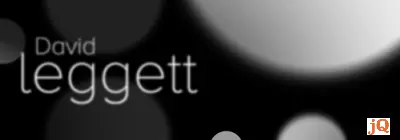
8 Animated Parallax Examples Using jQuery
Article Introduction:jQuery empowerment: 8 amazing parallax animation web page cases
jQuery has greatly improved the level of website animation effects. The parallax effect brings perception and depth to the animation by observing objects in different directions of sight to make them appear in different positions. The following are 8 wonderful cases of using jQuery parallax effects on different websites to inspire you to create your own jQuery parallax animation.
Parallaxbokeh
CSS & jQuery animation parallax bokeh effect created by David Leggett. It uses the animation parallax effect as a website background, and while the effect may slow down the website slightly, this is still a good example.
Come
2025-03-05
comment 0
707
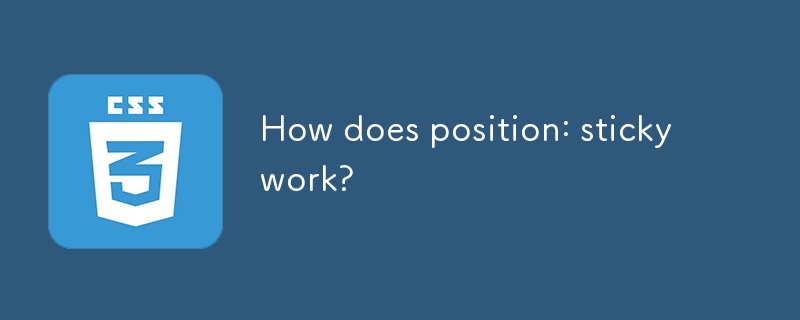
How does position: sticky work?
Article Introduction:Common causes and solutions for position:sticky failure: 1. It must be used with top or bottom, otherwise it will not take effect; 2. The parent container cannot set properties that affect positioning such as overflow:hidden or transform; 3. Positioning is relative to the nearest scrollable ancestor element; 4. It is often used in scenes such as navigation bar ceiling, table fixed columns, sidebar follow-up; 5. The behavior is similar to the combination of relative and fixed, and the stacking order is determined by the HTML structure.
2025-06-28
comment 0
1000

Get GeoLocation using jQuery (API) GeoPlugin
Article Introduction:jQuery easily get the visitor's geographic location
jQuery combines the GeoPlugin API to easily obtain the geographical location information of website visitors, including country, region, city, and latitude and longitude coordinates (can be used in Google Maps). This service is completely free! The following example contains a warning box that facilitates you to verify functionality:
How to use:
Copy the following jQuery code into the web page's tag.
Copy the following HTML code into the tag of the web page.
Run to view the effect!
jQuery code:
jQuery(document).ready(function($) {
alert("Your location: &quo
2025-03-05
comment 0
1144

How to create a sticky header or footer in HTML?
Article Introduction:To enable the navigation bar or bottom information in a web page to always display on the screen, use CSS' position:sticky. 1. You need to set position:sticky and top:0 to create StickyHeader, and make sure that the parent element has no overflow:hidden restrictions. It is also recommended to set background color and z-index to avoid content being exposed and overwritten; 2. Use position:sticky and bottom:0 to create StickyFooter, but if you want the footer to be fixed at the bottom of the screen regardless of the length of the content, you should use position:fixed; 3. If sticky is invalid, common reasons include not setting
2025-07-12
comment 0
899

What are some common semantic HTML elements (e.g., , , , , , , )?
Article Introduction:Using semantic HTML elements not only improves code readability, but also enhances structural clarity, accessibility and SEO effects. 1. The header of a page or block often contains titles, navigation or logo; 2. Package main navigation links, such as the top menu or sidebar; 3. Define the unique main content area of ??the page and cannot be nested in other semantic tags; 4. Organize content blocks with titles to represent independent content units, such as blogs or product cards; 5. Place footer information, such as copyright notices or related links. Using these tags rationally can help build a clear-cut and easy-to-understand web page.
2025-06-21
comment 0
245
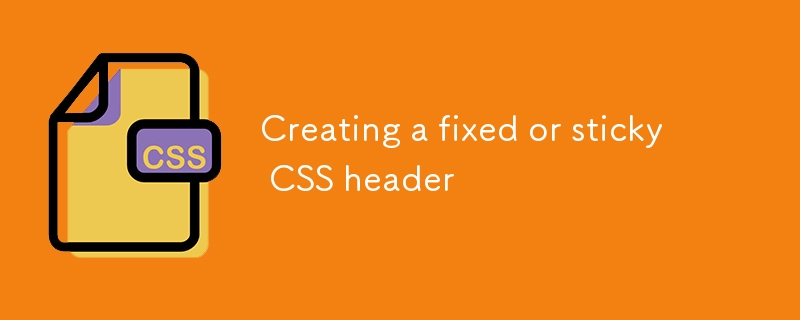
Creating a fixed or sticky CSS header
Article Introduction:There are three main ways to fix the head of a web page: 1. Use position:sticky is the most common and lightweight method. It needs to be used with the top value and avoid the parent container having properties such as overflow:hidden or transform; 2. Use position:fixed to make the head completely fixed to the top, but pay attention to content occlusion. It is recommended to add margin-top to the main content and test the performance of different devices; 3. Combined with JavaScript, more complex logic can be implemented, such as switching to fixed states after scrolling for a certain distance or adding animation effects, which is suitable for dynamic interactive scenarios. Just choose the right method according to your needs.
2025-07-11
comment 0
879

Defining page headers and footers with HTML5 `` and ``.
Article Introduction:Using HTML5 and elements can improve the clarity and accessibility of web page structure. It is usually located at the top of a page or block, and contains introductory content such as site titles, navigation menus or banners; it is often at the bottom, where copyright information, contact information or secondary navigation links are placed. Both can be used multiple times and content relevance is required. They support CSS style settings such as background color, margins, and text alignment to enhance visual distinction. However, not all pages must contain these two elements. Simple pages can be omitted according to actual needs, while standard web pages are recommended to improve user experience and SEO results.
2025-07-12
comment 0
615
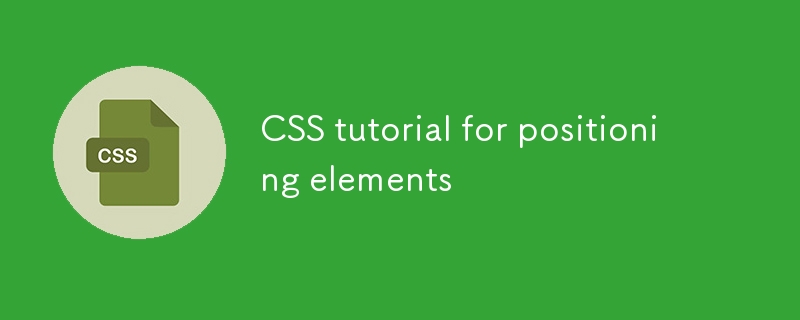
CSS tutorial for positioning elements
Article Introduction:Mastering CSS positioning is the key to controlling the position of web page elements. The position attributes include static, relative, absolute, fixed, and sticky, where static is the default value and does not support offset; relative moves relative to its original position; absolute is positioned relative to the recent non-static ancestor; fixed is based on viewport positioning; sticky combines relative and fixed positioning characteristics. z-index is used to control hierarchical relationships, but is only valid for non-static positioning elements and may be restricted by the parent container. Accurate positioning also needs to be used in conjunction with margin, top/left and transform, such as margin:au
2025-07-02
comment 0
288

When to use the HTML5 header and footer tags?
Article Introduction:Using HTML5 and tags can improve the semantic structure of web pages, enhance accessibility, SEO and code maintainability. 1. It is used at the top of the page or block, often containing titles, navigation, introductions, etc., and can be used multiple times; 2. It is located at the bottom of the page or block, usually displaying copyright information, contact information, related links, etc., and can also be reused in different blocks; 3. Avoid misuse of these tags or putting irrelevant content into it only because of style; 4. Examples of correct structure include the use of global and local head and tails to achieve a clear document level.
2025-07-03
comment 0
463

Resolving Element Overlaps with CSS Positioning and Z-index
Article Introduction:To solve the problem of overlapping web elements, we must first understand CSS positioning and z-index attributes. 1. The positioning type of element determines its layout in the page, such as static, relative, absolute, fixed and sticky, each has different behaviors; 2. z-index controls the stacking order of elements, but is only valid for positioning elements and is subject to the stacking context; 3. In actual repair, position:absolute and higher z-index must be set by the pull-down menu. The background color should be added to the fixed head and the top margin should be added to the content area. The modal box should use position:fixed and higher z-index, and the overlap between absolute positioning elements should be adjusted by adjusting z
2025-07-05
comment 0
132

Vanilla Javascript: Creating Animated Sticky Navigation Menu
Article Introduction:Core points
Create an animated sticky navigation menus without the need for a jQuery plugin using pure JavaScript, CSS, and HTML. The menu is designed to slide out of view when scrolling down and slide back into view with a translucent effect when scrolling up.
This process involves setting up the basic HTML structure, applying styles to main elements, and then animateing the menu. The animation is triggered by attaching the event handler to the scroll event and using CSS transformation to adjust the position and appearance of the menu according to the scrolling direction.
This custom solution provides more design flexibility and allows easy customization to be done according to specific needs. The end result is a dynamic interactive navigation menu that enhances the user experience.
Web navigation menu design needs to consider many factors, such as dishes
2025-02-16
comment 0
1146
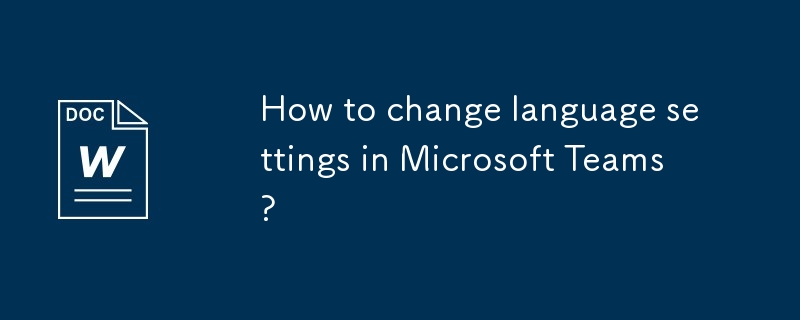
How to change language settings in Microsoft Teams?
Article Introduction:To modify the language of Microsoft Teams, different steps need to be taken depending on the platform used. 1. Computer side: Windows users need to go to "Settings>Time and Language>Language" to add and set it as the preferred choice, and it will take effect after logging out; Mac users will go to "System Settings>Language and Region", put the required language to top, and take effect after restarting; you can also try searching for "language" in Teams settings to see if there are in-app options. 2. Web version/Office365: Log in to the Microsoft 365 settings page, click the gear icon to enter "General Settings", change the "Show Language" in the "Language and Region" section and save, and refresh the Teams page. This operation can also be used.
2025-07-02
comment 0
770

How to search for data on DEEPSEEK
Article Introduction:DEEPSEEK (Hangzhou DeepQuosuo Artificial Intelligence Basic Technology Research Co., Ltd.) is a highly-watched AI intelligent search tool. This article will guide you on how to use DEEPSEEK efficiently for data search. DEEPSEEK data search steps: Access the DEEPSEEK platform: Make sure you have successfully logged into the DEEPSEEK platform. Positioning search bar: In the web version, the search bar is usually located at the top or center of the page; in mobile applications, the search bar is usually located at the bottom navigation bar or home page. Enter keywords: Enter your search keywords in the search bar. For example, if you search for "Artificial Intelligence Development Trend", enter "Artificial Intelligence Development Trend". Set the search range (if any):
2025-02-19
comment 0
681
















